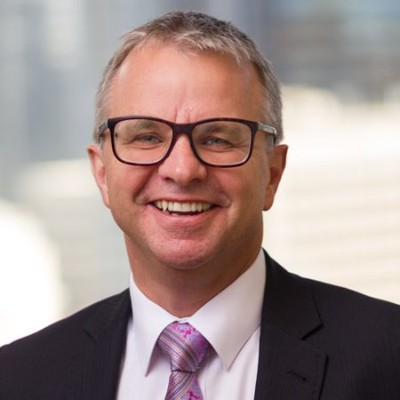|
Hey Reader, in today's edition:
- Partnering with India
- Make or break for transition investment
- Incentivising green aluminium
|
|
|
|
Renewable energy diplomacy
Australia may have the highest rate of rooftop solar deployment in the world per capita but that's dwarfed on a megawatt basis by energy juggernaut India.
Smart Energy Council (SEC) CEO John Grimes, travelling as a member of an Australian delegation, has signed a letter of intent with India’s Power Grid Corporation and Deakin University, to strengthen workforce capability in high-voltage transmission.
India, the world’s third-largest emitter and second-largest producer of coal, ranks third in solar power capacity behind China and the United States, after recently overtaking Japan, with solar at the heart of its target of 500GW of non-fossil fuel electricity capacity by 2030, although coal remains the country’s largest source of electricity.
The solar module manufacturing capacity nearly doubled in just one year to 74GW in March 2025 and solar photovoltaic-cell manufacturing rose from 9GW to 25GW, according to official data. A big milestone was the start of the first ingot-wafer manufacturing facility (2GW), further strengthening India’s supply chain.
Speaking in New Delhi, Australian Energy Minister Chris Bowen tied Australia’s COP31 campaign to India’s bid to host future international climate negotiations, although the big emitter is yet to submit its 2035 pledge.
Climate leadership and the multilateral system were more important than ever, with India as a potential host of COP33, and a powerful voice for sustainable development and Australia as a bridge between developed nations and our shared region, Bowen said.
“COP31 would allow us to build on landmark initiatives like the International Solar Alliance launched by India in the lead up to COP21. Australia looks forward to developing an ambitious agenda for COP31 in partnership with Pacific countries, and in consultation with international partners. And we hope to connect that agenda to the host of COP32 and COP33 – which we know that India is hoping to host.”
Chris Bowen
Climate Change and Energy Minister
|
Expert view
“These delegations are a key pillar of Australia’s supply chain diversification strategy, opening new pathways for collaboration in solar, wind, energy storage, and power electronics.
Following the launch of the Australia-India Renewable Energy Partnership by Prime Ministers Modi and Albanese in November 2024, SEC has deepened its on-the-ground collaboration. It is partnering with the National Solar Energy Federation of India, Pandit Deendayal Energy University, Gujarat Energy Research and Management Institute, and Deakin University to deliver rooftop solar installer training aligned to Prime Minister Modi’s 10 million Solar Rooftop initiative.
SEC is also working with Power Grid Corporation of India and Deakin University to co-develop high-voltage transmission training for blue-collar workers in both countries, building the workforce needed to realise a clean energy future, while advancing shared goals in skills, technology, and climate ambition.”

|
Scott Hamilton
Smart Energy Council Senior Adviser
|
|
Right-timing transition investment
The 2020s “will be looked back on as the decade which either makes or breaks our ability to live safely on this planet,” climate scientist Joëlle Gergis told a room full of investors at the IGCC summit.
But a “tragedy of misalignment of horizon” sees investors failing to factor even the “here and now” climate risk into their decisions, said FundsSA Chair Guy Debelle.
“We should be nailing green iron,” Debelle said, but instead Saudi Arabia is investing ahead of Australia “because they’re looking beyond the horizon where they're earning revenue”.
Investment cycles remain mired in the past — seven years for venture capital, and at the other end, incumbents with 50-year capital cycles that are at the end of the depreciation schedule, while new technology for industrial decarbonisation needs upwards of $1 billion just to deliver a pilot, said serial entrepreneur Saul Griffith.
“All of these projects are difficult to finance with traditional venture, even traditional downstream capital…And how do you really make these investments that look like 20,30, 40, 50-year investments in a climate where there will be a lot of competition from very noisy, very profitable things like AI?”
“We really need to figure out how to...break the rules of traditional capital that's chasing faster, higher returns and think about investing in things that are necessary and inevitable, and that's going to rely on us, honestly, leaning more into science and away from Silicon Valley.”
Closer to home, HESTA head of portfolio management Jeff Brunton told the summit the group was keen for a revisit, as flagged by the government, of the Your Future Your Super performance test.
Reform of the test has the support of Climate Change Authority Chair Matt Kean who said “Whilst there's no shortage of capital available from Australians through their pension funds, there is a great shortage of that capital going to the businesses of tomorrow”.
“And the place to start on that side of things is addressing the performance test, super rules that are too prescriptive, incentivise benchmark-hugging and provide no reason for people like Jeff to go and invest in something like a battery manufacturing business.”
Gergis pointed to International Energy Agency forecasts that between 50% and 80% of the emissions reductions required by 2030 could be achieved with technology that's already available. It’s just a case of getting on with the job.
|
Expert view
“We need a 43% reduction by 2030 in global emissions. But if you look at policies currently in place, we're only on track for 2% of that, not that 43% that's needed. So right now, if we just continue on the track that we're on, we're looking at global warming in the order of around 3.6 degrees.
If you think of two degrees of global warming, what that starts to mean in a country like Australia is 50 degree summer temperatures, by three degrees that becomes an average summer in parts of southern Australia.
When we had our black summer bushfires in 2019/2020, that broke every record in the book, and it's a global record for the extent of a wildfire. But that becomes an average summer by 2040 and a cool summer by 2060 — that's at two degrees.
So 82% of our emissions come from the burning of coal, oil and gas. And right now we haven't turned the tap off, so as long as that tap is on, we are flooding the atmosphere and the ocean with carbon that it just can't absorb.”

|
Joëlle Gergis
Climate scientist
|
|
|
|
|
Catch Up

Capital
|
Shrugging off its latest failed takeover, Santos (ASX: STO) CEO Kevin Gallagher spruiked imminent production growth as the gas giant brings Barossa LNG online and moves closer to the start-up of Pikka in Alaska — together expected to lift production by around 30% by 2027 compared to 2024 levels. “Momentum is also building around our Narrabri Gas Project, with strong market interest reflected in recent MOUs and ongoing engagement with key stakeholders. Narrabri is the key to solving east coast gas supply concerns and would be a competitive supply source for local industry for decades to come,” Gallagher said.
Meanwhile farmers vowed to fight back after the Queensland government approved the construction of a new coal seam gas processing facility near the town of Cecil Plains, the Lynwood Field Compressor Station which is a key part of the Santos Gladstone LNG project. Two groups, Lock the Gate and Save Our Darling Downs, will seek an internal review of the decision.
 Projects
|
Renewable energy fund manager and developer Octopus Australia expanded its battery portfolio with the acquisition of Coleambally, a 100MW project located in southern NSW west of Wagga Wagga in one of the state’s strongest renewable corridors. The acquisition follows a billion-dollar partnership with Dutch pension investor APG to accelerate the build-out of projects. “The sale of the Coleambally BESS project is a proud moment for our team and a validation of our strategy to be a leading, integrated energy solutions provider in Australia,” said Qiao Nan Han, Country Manager for Australia at China’s Risen Energy.
A mining club founder says the coal mission is still critical, calling for the industry to advocate for their social and political license. Jodie Currie, who started the Bowen Basin Mining Club in Mackay 15 years ago, sold out a recent networking event in Singleton with the future of the Yancoal and Glencore-owned Hunter Valley Operations (HVO) in play. “The lasting economic anchor for the Hunter Valley”, was HVO General Manager David Foster’s description of a life-extension proposal currently with the NSW Department of Planning, Housing and Infrastructure.
Amazon has unveiled plans to build 12 mini nuclear reactors in southern Washington, USA, following its acquisition of X-energy, a small modular reactor developer. The Cascade Advanced Energy Facility is set to begin construction by the end of the decade, with hopes of generating its combined nearly gigawatt of capacity some time in the 2030s. (Heatmap News) (Utility Drive)

Policy
|
Consultation opened for the design of the $2 billion Green Aluminium Production Credit. Credits will be payable per tonne of green aluminium produced for up to 10 years, or to 2044, whichever is sooner. Individual facility production costs will determine final credit rates. “Decarbonising our aluminium smelters is essential to achieving our net zero targets,” Industry Minister Tim Ayres said in Gladstone. Aluminium made using renewable energy is a priority sector under the Future Made in Australia agenda.
A draft policy paper shows that the European Union plans to cooperate with US local authorities and think tanks on clean energy and climate action, the Financial Times reported. European leaders plan to agree for the bloc to set a new climate change target for 2040, Reuters reported, but demand the EU does more to support industries like steel and carmaking to meet it, according to draft conclusions for an EU summit next week.

Regulation
|
US Republicans are moving to shut down a wave of state and local climate-damage lawsuits against the fossil fuel industry with a two-pronged strategy: pushing for a federal shield law and urging the Supreme Court to intervene. (Barron’s/AFP)

Technology
|
Electric vehicles are key to achieving Australia’s clean energy targets but an acceleration in charging infrastructure is needed to support greater uptake, experts told the SXSW Sydney conference. “The underlying EV adoption curve is probably steeper and faster than a lot of people realise. We’ve seen double digit growth month-on-month as far as charging utilisation sessions and people joining the JOLT network,” CEO Doug McNamee said. “As we look towards 2030, EV adoption needs to massively accelerate. We need to be getting to 50-60% of new cars sold being EVs to be able to hit anywhere near the EV adoption targets.”

Climate
|
Hotter and sooner than previous official advice, the UK government has been told to prepare for 2 degrees of global warming by 2050, Sky News reported. The letter from Baroness Brown, Chair of the independent Climate Change Committee’s Adaptation Committee, to Parliamentary Under-Secretary of State Emma Hardy sets out the committee’s response to a request for advice on strengthening the UK’s adaptation objectives.

People
|
China hawk Andrew Shearer will be Australia’s next Ambassador to Japan. (AFR)

Research
|
EU methane rules are a problem for US LNG producers, according to the Institute for Energy Research. When it begins in 2027, the regulation will penalise importers of LNG into the EU who fail to prove that their gas meets the same monitoring, reporting, and verification standards imposed on EU producers. The requirement to provide data “at the level of the producer” would be particularly challenging for American LNG exporters because supplies are “commingled” in vast pipelines from different production basins with varied methane intensities.

Random
|
Not to be outdone by the US, now China says it’s advancing fusion energy. (China Daily)
|
|
|
|
What's On
October 16
NSW Roadmap Tender Round 7 Webinar
ASL’s General Manager Commercial Thimo Mueller, Strategic Leader Infrastructure and Innovation Syvilla Boon, Principal Advisor Lachlan White, and Policy Manager Jack Kratzat will speak at this online event.
October 21-22
AFR Energy and Climate Summit
AEMC Chair Anna Collyer, AEMO CEO Daniel Westerman, Climate Change Authority Chair Matt Kean, Origin Energy CEO Frank Calabria, Squadron Energy CEO Rob Wheals, EnergyCo Chair Paul Binsted, Climate 200 Convenor Simon Holmes à Court, Grattan Institute Energy & Climate Change Director Tony Wood, BlueScope’s Head of Energy & Carbon Megan Wheeldon and the nation’s energy ministers will speak at this Sydney event.
October 22
2025 Order of Australia Lecture
Emeritus Professor Mark Howden will deliver this year’s Order of Australia keynote - Go hard or go slow on climate change? What’s in the national interest? - at this Canberra event.
October 23
Understanding Australia's 2035 Net Zero numbers
Climate Change Authority Chair Matt Kean will speak at this UTS event in Sydney, in conversation with Professor Stuart White, Director of the UTS Institute for Sustainable Futures.
October 27
The real costs of the transition
Powerlink CEO Paul Simshauser will speak at this lunchtime webinar from The Energy, alongside Aurecon Managing Director, Energy (Australia) Paul Gleeson and moderated by Beyond Zero Emissions CEO Heidi Lee.
October 29-30
All Energy Australia
Victorian Energy Minister Lily D’Ambrosio, incoming Clean Energy Council CEO Jackie Trad and Pacific Green CEO Joel Alexander are among the speakers at this year’s All Energy event in Melbourne.
November 5
National Press Club address
Outgoing ASIC Chair Joe Longo will address the National Press Club on “Open for opportunity: Taking charge of the future of our financial markets” at this Canberra event.
November 6
ANU Solar Oration 2025
Merryn York, who has led system design at AEMO, will speak at this Canberra event, following an opening statement by ACT Energy Minister Suzanne Orr.
|
|
|
|
